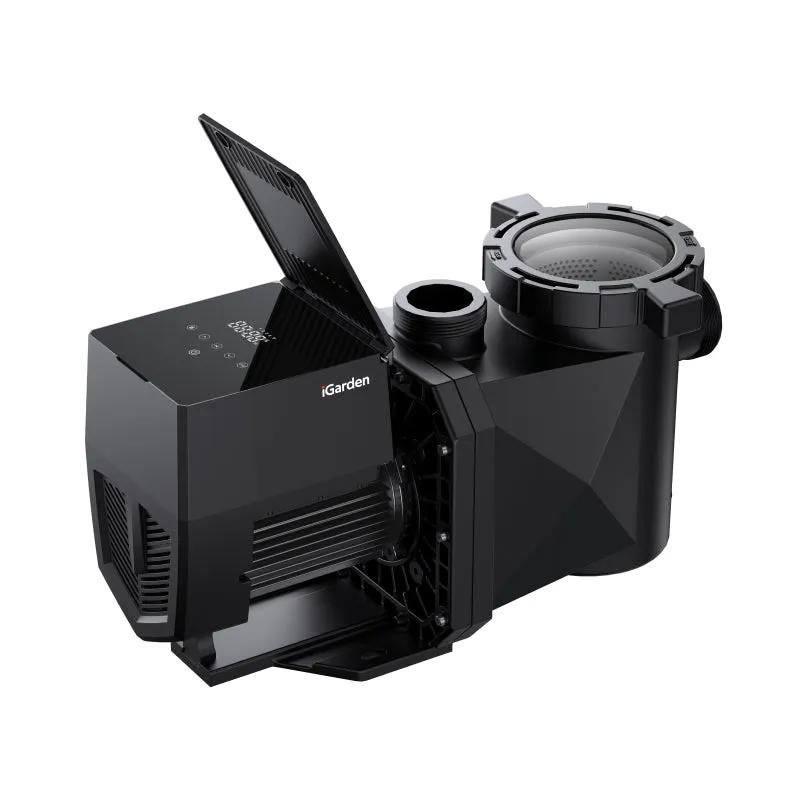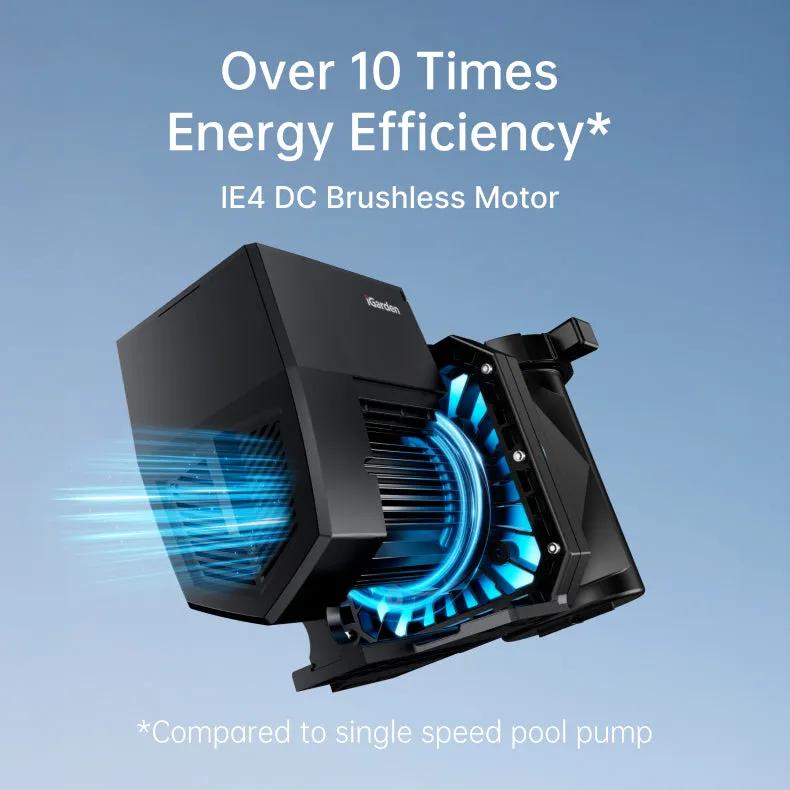A staggering 73% of pool pump failures can be traced back to dry running incidents, resulting in over $500 million in preventable repairs annually. For pool owners, these unexpected equipment breakdowns not only disrupt summer enjoyment but also lead to costly emergency replacements. Dry running occurs when a pool pump operates without adequate water, creating a dangerous situation where critical components run without proper lubrication and cooling. This seemingly simple oversight can cause catastrophic damage to your pump’s impeller, seals, and motor – often requiring complete system replacement. Understanding and preventing dry running isn’t just about protecting your investment; it’s about ensuring your pool’s filtration system operates reliably when you need it most. This comprehensive guide will equip you with practical strategies to identify, prevent, and address dry running issues before they compromise your pool pump’s integrity.
Understanding Dry Running: The Silent Pump Killer
Dry running occurs when swimming pool pumps operate without sufficient water flowing through its system, creating a dangerous condition where metal components grind against each other without proper lubrication. This mechanical friction generates excessive heat, reaching temperatures up to 200°F within minutes. The resulting thermal stress can permanently deform internal components, particularly in modern high-efficiency pumps that rely on water for cooling.

Why Swimming Pool Pumps Are Vulnerable
Pool pumps face unique challenges that make them especially susceptible to dry running damage. Their above-ground installation often requires perfect priming conditions, while seasonal temperature changes can affect water levels dramatically. Installation height plays a crucial role – pumps mounted more than three feet above water level struggle with maintaining prime, especially after power interruptions. Common vulnerabilities include hairline plumbing cracks that allow air infiltration, improperly sealed pump lids, and skimmer boxes that become exposed during normal pool use. The consequences manifest as melted seal rings, cracked impeller housings, and seized motor bearings – damages that typically require complete pump replacement rather than simple repairs.
Preventing Dry Running: Proactive Protection Strategies
Maintaining proper water levels is your first line of defense against dry running damage. Check pool water levels daily during peak season, ensuring they remain at least halfway up the skimmer opening. Install clear marked water level indicators near the skimmer for quick visual checks. For automated protection, consider installing a float switch in your skimmer that cuts power when water drops below critical levels. Many pool owners have found success with iGarden’s automated monitoring systems, which can detect the early signs of dry running by monitoring changes in pump pressure.

Essential Pump Accessories for Dry Run Prevention
Smart controllers with integrated flow monitoring have revolutionized pump protection, automatically shutting down systems when flow rates drop below safe thresholds. While basic flow sensors start at $100, advanced controllers with remote monitoring capabilities typically cost $300-600. This investment pays for itself by preventing a single catastrophic pump failure. Timer-sensor combinations offer an excellent middle ground, providing both scheduled operation and emergency shutdown capability. For maximum protection, pair these devices with a vacuum sensor that detects prime loss, creating a multi-layered safety system that responds before damage occurs.
Troubleshooting Active Dry Running Emergencies
When you suspect your pool pump is running dry, immediately shut off power at the circuit breaker to prevent further damage. Listen for unusual grinding or screeching noises, which often indicate the pump has lost prime. Check for excessive heat by carefully touching the pump housing – temperatures above normal operating range suggest dry running conditions. Monitor pressure gauge readings; a sudden drop below 10 PSI typically indicates prime loss.
When to Seek Professional Pool Pump Support
If your pump shows signs of seal discoloration, produces burning odors, or fails to maintain consistent pressure after repriming attempts, contact a certified technician immediately. These symptoms often indicate internal damage requiring professional intervention. Look for technicians certified by major pump manufacturers and check their experience with your specific pump model. Complete pump replacement typically ranges from $800 to $2,000 installed, while individual component repairs like seal replacements average $200-400. Consider replacement if repair costs exceed 50% of a new pump’s value, especially for units over seven years old. Professional diagnosis can determine whether issues stem from installation problems, which may be covered under warranty, or operational damage requiring out-of-pocket repairs.
Optimizing Pool Pump Installation Against Dry Running
Proper pool pump installation forms the foundation of dry running prevention. Position the pump no more than three feet above water level to maintain reliable prime, with the pump base securely mounted on a level concrete pad. Size suction pipes at least 2 inches in diameter, minimizing horizontal runs and eliminating unnecessary elbows that create air traps. Install dual main drains with anti-vortex covers to ensure consistent water flow, even during heavy pool use.
Critical Installation Mistakes to Avoid
Oversized pumps create excessive suction that can pull air through minor plumbing imperfections, leading to prime loss. Common installation errors include inadequate pipe support causing stress cracks, improper bonding that accelerates corrosion, and check valve placement that interferes with priming. Avoid routing suction lines above water level where possible, and ensure all pipe joints are properly sealed with pool-grade PVC cement. When integrating with existing filtration systems, match pipe sizes throughout the circuit to prevent flow restrictions that could trigger dry running conditions.
Maintaining Peak Pump Performance Long-Term
A systematic maintenance approach significantly extends pool pump longevity and prevents dry running incidents. Begin with monthly visual inspections of pump housing seals, checking for cracks, discoloration, or mineral deposits that could compromise water-tight operation. During peak swimming season (May-September), inspect strainer baskets weekly to prevent debris accumulation that could restrict water flow. Test pump pressure readings each morning before first operation – consistent readings between 10-25 PSI indicate proper functioning. Maintain pool chemistry within ideal ranges (pH 7.2-7.6, chlorine 1-3ppm) to protect internal pump components from corrosion. Replace mechanical seals every 3-4 years, even if no visible wear appears, as microscopic degradation can lead to air infiltration. Schedule O-ring replacements annually, using only manufacturer-recommended parts coated with appropriate lubricant. During winter shutdown, drain pumps completely in freezing climates and cover with insulated pump blankets. Keep detailed maintenance logs tracking pressure readings, repair dates, and unusual sounds – these records prove invaluable for spotting gradual performance decline before catastrophic failure occurs. For variable-speed pumps, verify speed settings monthly to ensure programming hasn’t been inadvertently altered, potentially creating dry running conditions during low-flow cycles.
Expert Pool Pump Support Resources
Leading pool pump manufacturers maintain comprehensive online troubleshooting portals where owners can access model-specific diagnostic guides and repair videos. Hayward’s Digital Support Center offers interactive troubleshooting trees that walk users through common issues, while Pentair’s Pool Pro app provides real-time diagnostic assistance through augmented reality. For immediate help, join established pool maintenance communities like Pool Forum or Trouble Free Pool, where experienced operators share practical solutions to emerging problems. When selecting a certified technician, consult the Independent Pool and Spa Service Association (IPSSA) directory, which verifies credentials and specializations. Document equipment serial numbers, installation dates, and maintenance history to expedite warranty claims – most manufacturers require this information through their online warranty portals. Local pool associations often maintain emergency service directories for after-hours support, particularly valuable during peak season when technician availability is limited. Consider joining regional pool owner groups on social platforms for location-specific advice on dealing with weather-related challenges and finding reliable service providers.
Essential Guidelines for Pool Pump Protection
Protecting your pool pump from dry running damage represents one of the most impactful investments you can make in your pool’s long-term reliability. By implementing the preventive measures outlined in this guide – from proper installation height and regular maintenance checks to installing protective sensors – you can avoid joining the 73% of pool owners who face premature pump failures. Remember that even a basic float switch installation today could prevent thousands in repair costs tomorrow. The key to success lies in consistency: maintain proper water levels, conduct regular inspections, and respond immediately to unusual pump sounds or performance changes. Consider starting with a simple weekly water level monitoring routine and gradually implementing more advanced protection measures as your budget allows. Your pool pump is the heart of your pool’s circulation system – protecting it from dry running ensures years of trouble-free operation and summer enjoyment. Take action today by checking your pump’s installation height and scheduling your first maintenance inspection.
